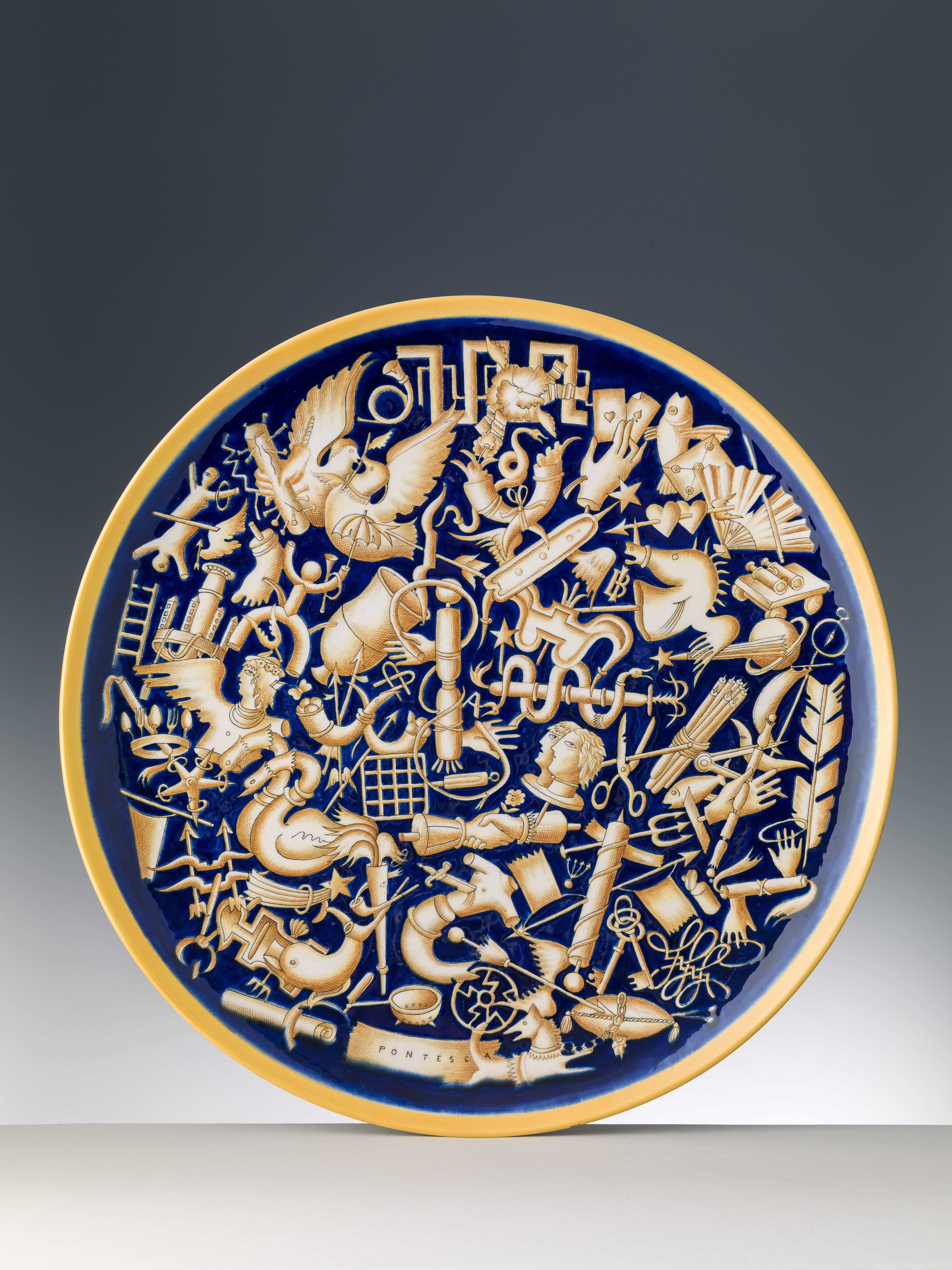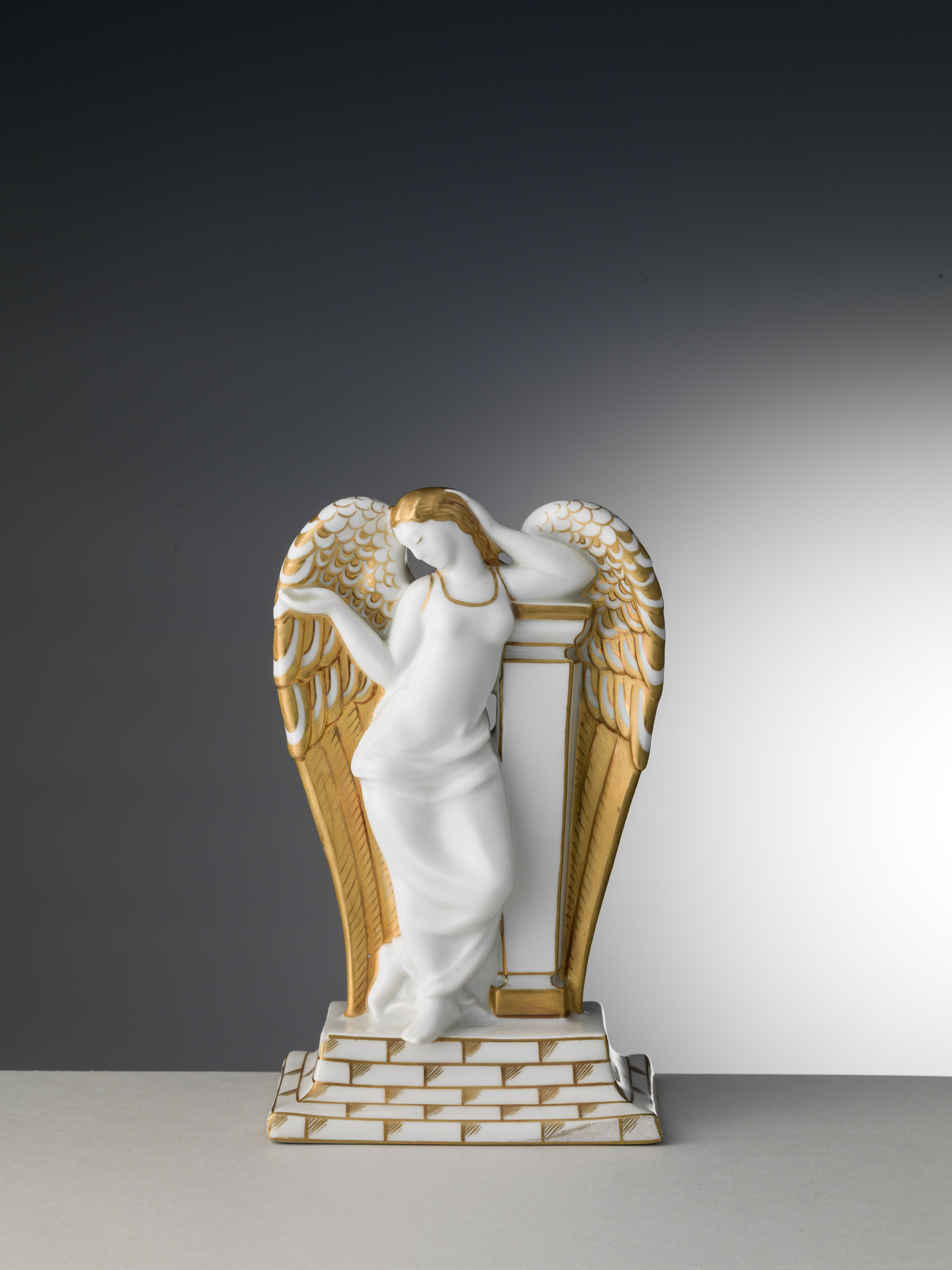
Do you know who Gio Ponti was and what he represented for Italian art and beyond?
We often hear about Made in Italy, but few know one of its greatest exponents was Gio Ponti, who from the 1920s was director of Richard Ginori, initiating a process of production renewal.
An architect, designer and intellectual, Gio Ponti was the point of reference for the definition of an Italian style of decorative arts, but his relationship with ceramics made his innovative ideas still relevant at the time.
Gio Ponti’s ceramics

Between 1921 and 1922 Gio Ponti was a talented young man who received a great opportunity. He joined the artistic department of the Richard-Ginori Ceramic Company, with the task of renewing the manufacture’s historical repertoire, proposing new shapes and decorations destined to revolutionize the very concept of modernity and mark the path of the neoclassical Art Deco line.
GIO PONTI’S DEBUT AT RICHARD GINORI
Gio Ponti’s innovations are linked to the precious pictorial decorations, entrusted to the workers active within the Doccia workshops. Among the most famous motifs devised during the early years, themes related to the ancient world stand out, in which Ponti’s inventive imagination is combined with a deep knowledge of ancient and contemporary art history, which inevitably influences the artist’s vision.
The continuous confrontation with classicism is linked with traces of metaphysical painting, from which derives the suspended atmosphere reminiscent of the Piazzas of Italy and the works of Giorgio de Chirico.
COLLABORATION WITH SCULPTORS
Ponti’s task, as artistic director, is to provide the sculptors who are called upon to collaborate with Richard Ginori with ideas and designs to be modeled and put into production, offering a sampler diversified in subjects, but in line with the taste and spirit proposed by their creator.
The sculptors Salvatore Saponaro, Libero Andreotti, Italo Griselli and Geminiano Cibau were able to translate with precision and skill the refined sentiment and elegance typical of Ponti’s language, both in the majestic allegorical figures linked to classical imagery and in the vast zoo of porcelain animals, formed by exotic elephants, amusing shrews, snappy antelopes and greyhounds caught in different attitudes.
Also not to be forgotten is the majestic Centerpiece of the Italian Embassies executed by Italo Griselli from designs by Ponti and Tomaso Buzzi, produced between 1926 and 1927 on commission from the Ministry of Foreign Affairs. In fact, recovering the great tradition of monumental eighteenth-century centerpieces composed of numerous elements, the two architects envisioned a central group consisting of thirteen pieces, dominated by the allegory of Italy, around which numerous individual pieces could be freely arranged on shaped bases, depicting subjects from the animal and plant world.
This is a very complex and technically demanding work, commissioned by the government to be sent to all Italian embassies abroad, to adorn the table during official lunches and to show guests one of the most representative artistic expressions of the nation’s cultural and industrial heritage.
THE SEASONS AND HARVEST SERIES
Within the figurative repertoire devised by Gio Ponti, a number of recurring themes can be identified, which the artist adapted and reworked according to needs and different execution techniques.
These include the theme related to the passage of time, interpreted symbolically through the image of the Seasons, translated first through the sequence of mermaids adorning plates, tiles and vases, then through pairs of peasants carrying the symbols of the relevant season.
The Seasons theme is created specifically for ceramic production, but there is a different group, that of the Grape Harvest, in which the subjects depict moments related to the grape harvest, conceived in 1927 to decorate the Milanese tavern Alla Penna d’Oca, and taken up by Ponti at a later date to apply it to plates and tiles of the Richard-Ginori Ceramic Company.
The success of these iconographic motifs was such that they were reused identically or with minimal variations in both Ezio Nesti’s ceramics and Nino Ferrari’s design for a chiseled silver tray.
LOOKING TO THE PAST TO ADVANCE INTO THE FUTURE
The series of works known by the title “My Women” well represents Ponti’s ability to take inspiration from motifs and influences of the past to create something new and modern, instantly recognizable as a figment of their author’s imagination, who, in 1957, wrote:
“For me there is no ‘the past’ because I consider that everything is simultaneous in our culture.”
The basis of the iconographic series is the recovery of the tradition of “Belle donne,” or that particular genre established in Faenza around the last quarter of the 15th century, characterized by the presence of female portraits, often associated with the cartouche bearing the woman’s name, painted on plates, cups and jugs.
Ponti’s idea is to actualize the ancient theme and adapt it to contemporary taste by endowing each female figure with her own distinctive somatic features and archaic name. The profile portrait of “Belle donne” is inspired by the models of Mannerism, from Rosso Fiorentino to Benvenuto Cellini to Bartolomeo Ammannati. To the late sixteenth-century references must be added references to the contemporary graphic art of Erté and the Deco draughtsmen and the influence derived from the paintings of Amedeo Modigliani, noticeable in the characteristically almond-cut eyes, triangle-shaped faces, and snappy, elongated forms.
The original core shows the various women suspended on clouds, often in flight over ideal cities formed mainly by architecture of classicist and mannerist taste, freely inspired by the treatises and architecture of Sebastiano Serlio and Andrea Palladio. The second variant of the series consists of women reclining on flowers with large corollas, while the last version is distinguished by the presence of smiling figures holding flowers or shells, sarcastically suspended between intertwined ropes.
GIO PONTI, CERAMICS AND ITALIAN DESIGN
Gio Ponti was a key figure in the definition of Italian taste, what we now call Made in Italy, not only thanks to his continuous and innovative projects for architecture and the design industry, but also through his exceptional network of contacts and relationships with artists and craftsmen that he was able to exploit and make known to the general public through two fundamental and well-known tools: magazines and exhibitions.
Indeed, Ponti spread his idea of modernity through articles devoted to individual artists and manufactures, chronicles of exhibitions and expositions, purchasing advice and photographic reviews that appeared in “Domus” and “Stile.” His frequentation with the world of exhibitions is also a constant in his career, participating actively, both as an exhibitor and as a member of organizing committees.
In addition to his lasting collaboration with the Milan Triennials, heirs of the Monza exhibitions, Ponti is a protagonist of international events such as “Italy at Work. Her Renaissance in Design Today,” a traveling exhibition held in the United States between 1950 and 1953 and designed to become a great opportunity for the nation’s economic and political rebirth after the war, aimed at promoting overseas Made in Italy through the top representatives of design and high artistic craftsmanship.
“Ponti became enthusiastic about this way I applied artistic technique and immediately entrusted me with a bunch of works. There is a great mutual esteem, although until the end we always called each other by her name.”
It is with these words that Fornasetti recalls Ponti and their fruitful collaboration, which began in the late 1930s.
THE LEGACY OF BRIDGES
If Gio Ponti’s spirit was to update the ancient theme and adapt it to contemporary taste, there are several contemporary designers and artists who embrace this idea. In fact, many, starting from traditional forms and decorations, have developed, thought out, designed works and cycles that lend themselves well to this distant comparison.
Ico Parisi was a great admirer of Ponti; he wrote about him on several occasions, emphasizing his “precious school” and “valuable example” professionally and creatively.
Alessandro Mendini created the series of customized “100% Make-up, The new Romantic Style” vases, which have now become icons of the 1990s, a clear reference to the decorative update implemented by Ponti in the 1920s.
Bertozzi & Casoni are the artists who have best interpreted Ponti’s message of the relevance and contemporaneity of ceramic language.

In addition to Richard Ginori during his long career, Ponti came into contact with various Italian ceramic realities: the Cooperativa Ceramiche di Imola, Pietro Melandri and the Faentine context (the cartepeste made with the Dalmonte family was famous), with Ceramiche Pozzi, Joo and Gabbianelli, to mention the main companies with which he promoted unique and extraordinarily current paths and projects.
His acquaintances saw him at the center of the Italian cultural debate and the definition of Italian rationalism. He collaborated with critics Ugo Ojetti, Edoardo Persico, worked together with Luigi Fontana and Giovanni Gariboldi, his successor at Richard Ginori.

